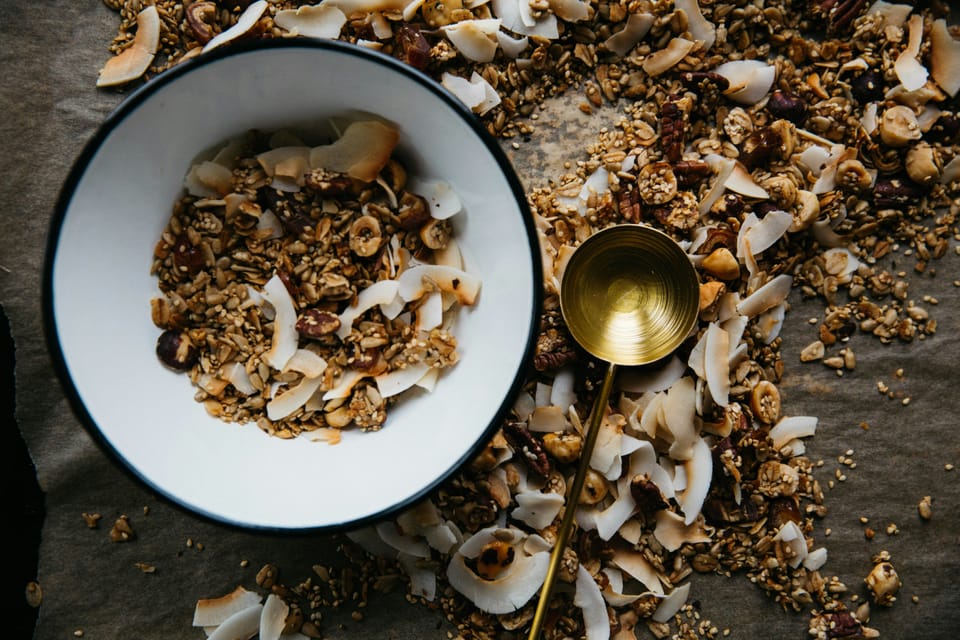Fiber: The Most Underrated Macronutrient

Protein, carbs, and fats usually get the most attention, while we often overlook one of the most important components of our diet—fiber. Not only does it help control hunger, but it also promotes long-term weight loss and better overall health. Fortunately, adding fiber to your meals doesn’t have to be difficult. The first step is understanding what fiber is and how to incorporate fiber-rich foods into your diet.
What is Fiber?
Fiber is a type of carbohydrate that our bodies cannot digest. Unlike other carbs, which are broken down into simple sugars, fiber remains undigested. There are two types of fiber:
- Soluble Fiber: This type forms a gel-like substance by attracting water, which slows digestion (helping you feel fuller for longer), regulates blood sugar levels, and adds bulk to your stool. Soluble fiber sources include:
- Grains: Oats, Bran, barley
- Fruits: Apples, oranges, strawberries
- Vegetables: Beans, Carrots, Sweet Potatoes
- Psyllium (commonly found in fiber supplements)
- Insoluble Fiber: This type adds bulk to stool and helps maintain regular bowel movements. Insoluble fiber can also help treat and prevent constipation. Foods rich in insoluble fiber include:
- Grains: Whole Grains, Bran, Brown Rice
- Fruits: Raspberries, Strawberries, Blackberries
- Vegetables: Zucchini, Broccoli
- Snacks: Popcorn
How Fiber Promotes Weight Loss
Adding more fiber to your diet can promote weight loss in several ways:
- Increases Satiety: Fiber-rich foods take longer to chew and digest, helping you feel full for longer periods.
- Regulates Blood Sugar: Soluble fiber slows sugar absorption, preventing insulin spikes and crashes that can lead to cravings or sugar crashes. Combining fiber with high-carb foods can reduce blood sugar spikes.
- Promotes Gut Health: Good gut bacteria thrive on fiber, and a healthy gut microbiome has been linked to maintaining a healthy weight.
Fiber-Rich Foods to Include in Your Diet
Incorporating more fiber into your meals can be as simple as swapping processed foods for fiber-rich options or adding seeds, berries, or grains to your meals. Here are a few general guidelines to help you:
- Opt for whole grains like whole wheat pasta, whole grain bread, brown rice over white rice.
- Eat more whole foods such as fruits and vegetables. Choose fresh fruit over fruit juice.
- Eat legumes such as chickpeas, beans, or lentils.
- Avoid processed foods like packaged snacks, candy, chips, etc.
- Keep the skin or peel on foods like potatoes, kiwis, apples as they contain fiber.
- Read nutrition labels (fiber is found just below Total Carbohydrate)
- Take a fiber supplement
What Foods Are High in Fiber?
- ½ cup of pinto beans (8 grams)
- ¼ cup of almonds (3 grams)
- ½ cup of oatmeal (4 grams)
- 1 cup of whole wheat pasta (7 grams)
- 2 tablespoons of seeds: flax (5 grams), chia seeds (10 grams)
- 3 cups of popcorn (3 grams)
- ¼ cup of avocado (7 grams)
How Much Fiber Per Day Do You Need?
The USDA recommends 14 grams of fiber per 1,000 calories consumed, but most people fall short of this recommendation. Here’s a breakdown of daily fiber needs:
- Children: 2–5-year-olds need about 15 grams, 5–11-year-olds need about 20 grams, and 11–16-year-olds need about 25 grams.
- Women: Women (ages 19–50) need 25 grams, and women aged 51 and older need 21 grams.
- Men: Men aged 19–50 need 38 grams, and men aged 51 and older need 31 grams.
Can You Consume Too Much Fiber?
Consuming too much fiber can lead to nutritional deficiencies, irritable bowel syndrome, and bloating. It’s recommended to stay under 50 grams per day. As with most dietary changes, it’s important to give your body time to adjust. Increasing fiber intake too quickly can cause discomfort, including bloating, constipation, gas, or cramping.
To reduce the risk of side effects:
- Build Up Slowly: Gradually increase fiber intake to allow your body to adapt. Start by understanding your current fiber intake and increase it by a few grams each day until you meet your individual needs.
- Incorporate Fiber Into Each Meal: Ensure a steady intake throughout the day.
- Stay Hydrated: Drink plenty of water to help fiber move through your digestive system.
Final thoughts
Incorporating more fiber into your diet is a simple yet powerful way to support your health, manage weight, and improve digestion. By gradually adding fiber-rich foods to your meals, you can feel fuller, regulate blood sugar levels, and promote a healthy gut. Start small, listen to your body, and stay consistent—over time, you’ll notice the positive impact on both your energy levels and overall well-being.



